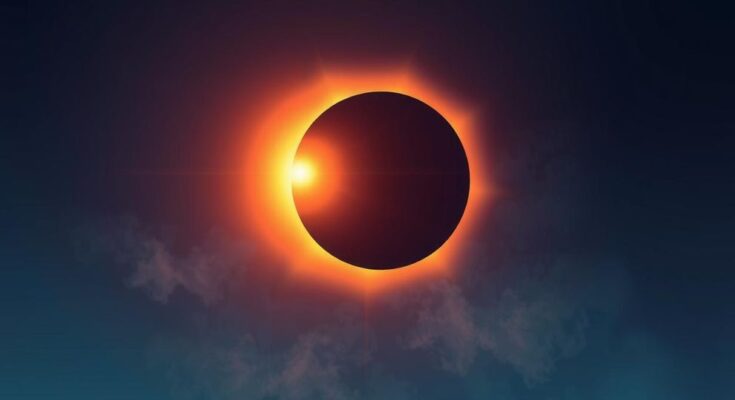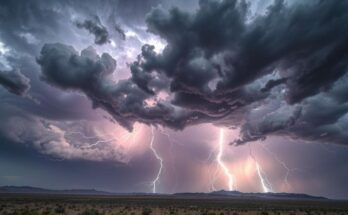On March 29, a partial solar eclipse will occur, visible in parts of North America, Europe, Africa, and northern Asia. Unfortunately, it will not be visible in India, but live streaming options are available. Safety precautions must be adhered to while viewing the phenomenon, including the use of eclipse glasses.
On March 29, a partial solar eclipse will occur, primarily visible in North America, Europe, Africa, and northern Asia. This celestial phenomenon happens when the Moon partially obstructs the Sun’s light as it aligns imperfectly with the Earth, preventing a total solar eclipse. According to NASA, although the central shadow of the Moon will not touch Earth, significant shadowing effects will still be observed in certain northern hemisphere regions.
In India, the partial solar eclipse will not be observable, as it is limited to specific areas of North America, Europe, and parts of northern Asia. However, Indian residents can view the event live online through various streaming platforms to experience this astronomical occurrence.
The timing of the eclipse will vary by location. Regions in North and South America will witness it early during sunrise, while in western Europe and northwestern Africa, it will occur during mid to late morning. By the time it reaches eastern Europe and northern Asia, it will already be afternoon. Based on Indian Standard Time (IST), the eclipse is scheduled to commence at 2:20:43 PM, peak at 4:17:27 PM, and conclude by 6:13:45 PM.
It is crucial to take safety precautions when viewing the eclipse, as looking directly at the Sun can cause severe eye damage. Observers should use safe solar viewing glasses or handheld solar viewers, as sunglasses alone are inadequate. It is also essential to avoid viewing the eclipse through cameras, telescopes, or binoculars without a special-purpose solar filter to prevent serious injury due to concentrated solar rays.
The partial solar eclipse occurring on March 29 will be largely visible in select regions across the northern hemisphere but unfortunately not in India. Individuals in India can still partake in the experience through online live streams. Safety measures are necessary while viewing the eclipse to protect against eye harm, highlighting the importance of using appropriate solar viewing equipment. The precise timing in IST indicates when spectators can observe the eclipse in local times.
Original Source: www.hindustantimes.com




